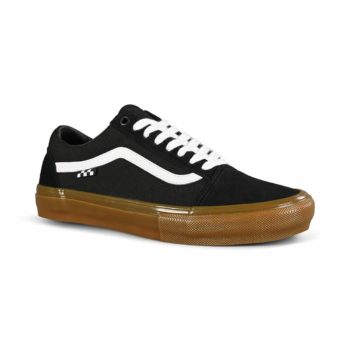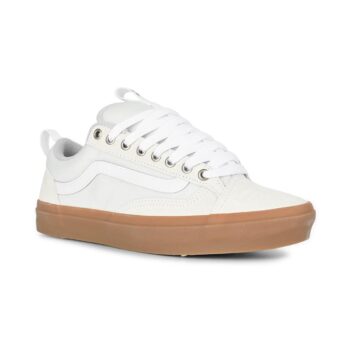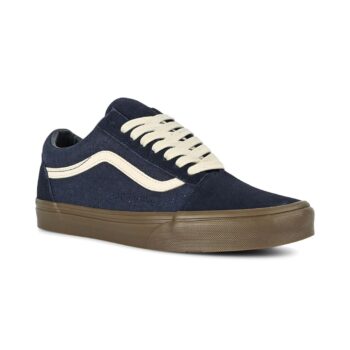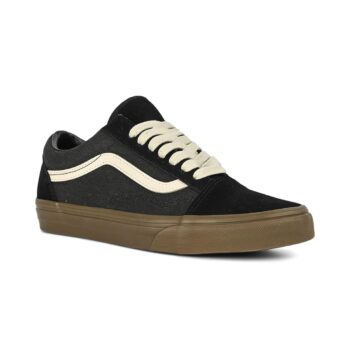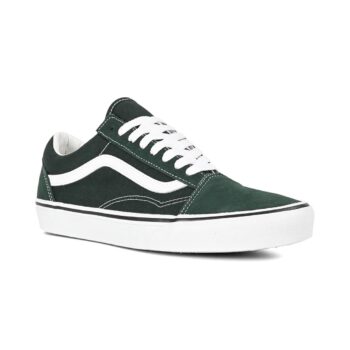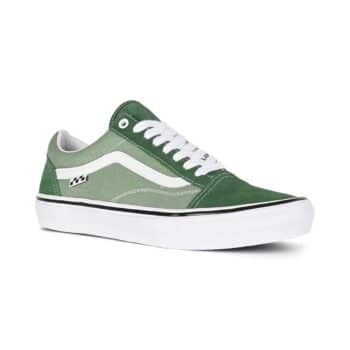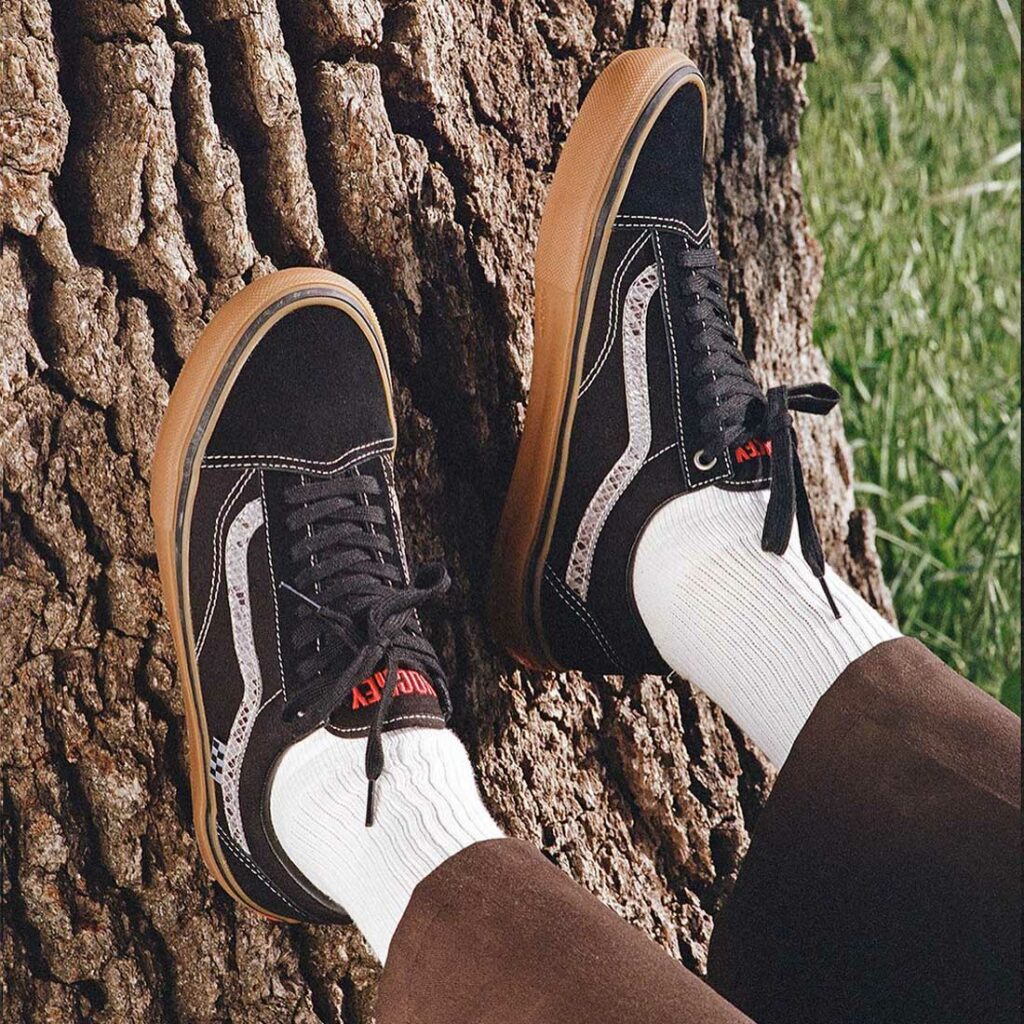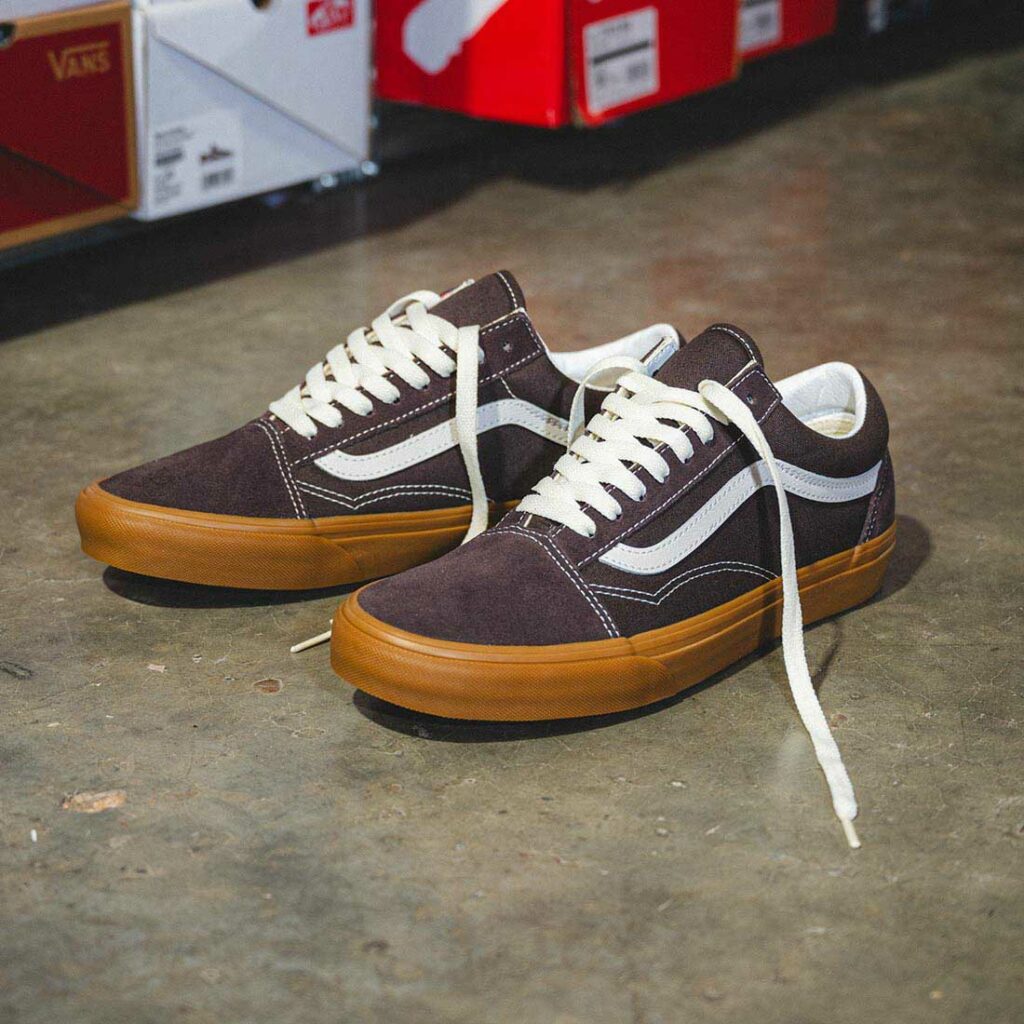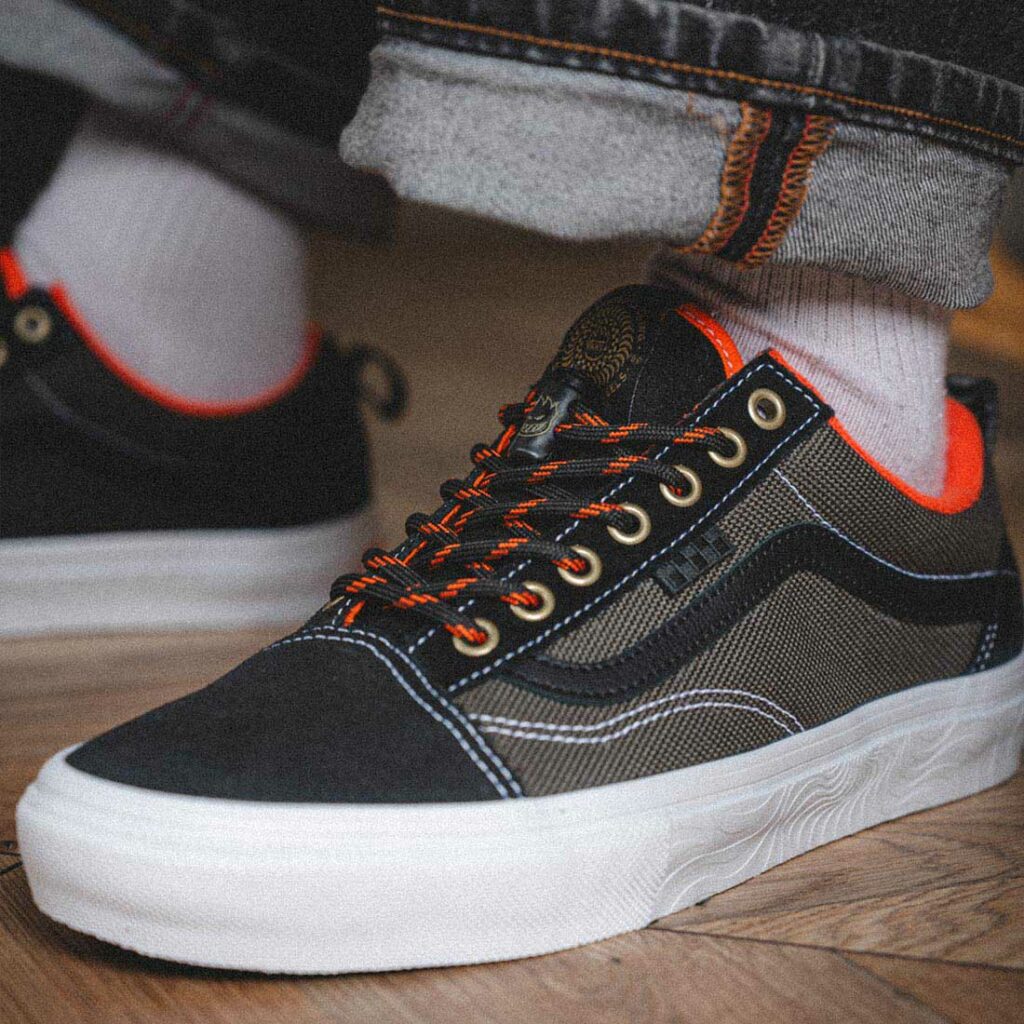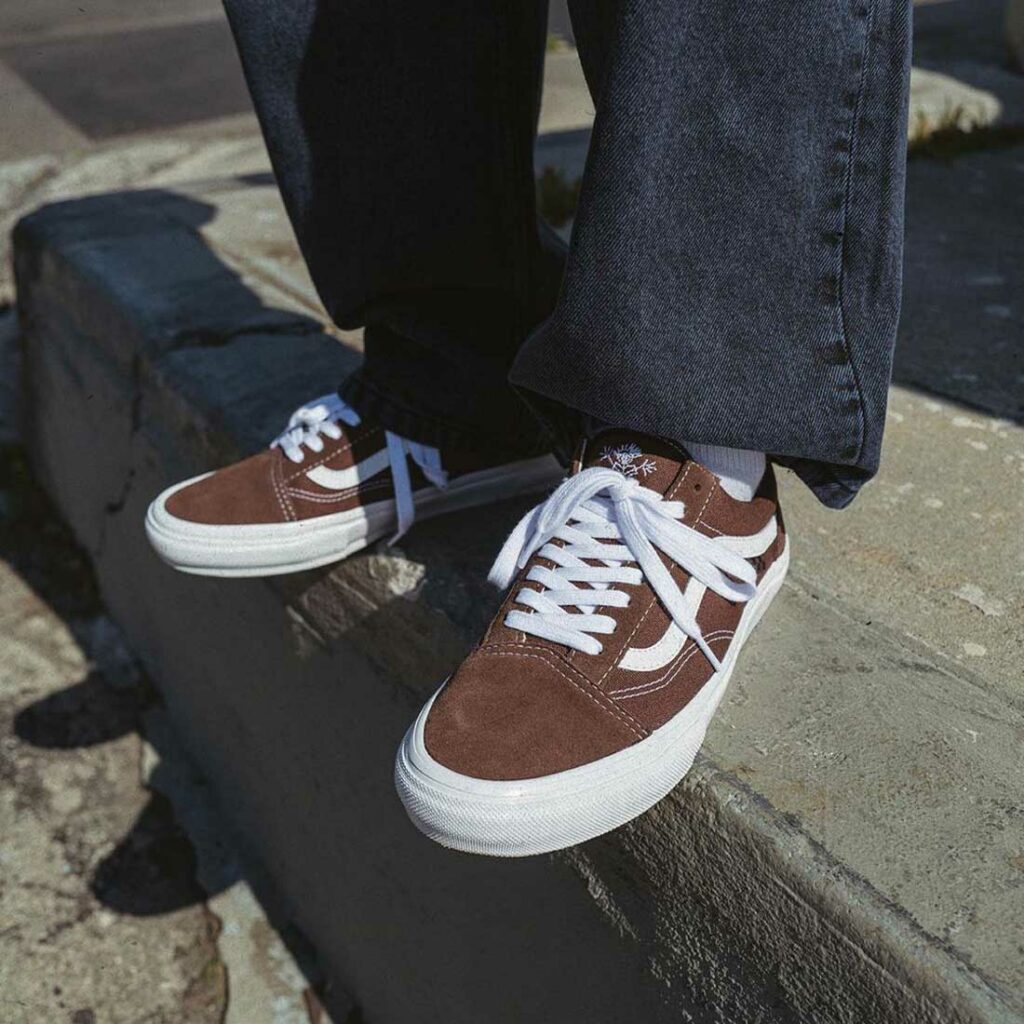From Californian boat shoes to the catwalk
If there is something Vans has truly mastered over the years, it's keeping their classic silhouettes relevant and the Vans Old Skool is certainly one of those styles.
When it comes down to the Old Skool, not only has Vans successfully maintained its relevance over the years, it has managed to transcend the skateboarding realm and find itself on the feet of some of the most famous and influential feet on the planet. The Old Skool is a shoe you can now expect to be worn by some of the most core dudes in skateboarding as well as celebrities like Kim Kardashian. It's weird to think of Andy Roy and a Kardashian having any cross-over in their wardrobes at all (to be honest, it's weird to think of Andy Roy owning a wardrobe), but that is now apparently the world we live in. So, how has the Old Skool managed to find itself in the upper echelon of sneaker fashion? Let's have a look...
One of the main reasons the Old Skool is where it is today purely comes down to the history of the shoe itself. The Old Skool was first produced in 1977, known initially as the "Style 36". By this time, Vans had fully integrated themselves into skateboarding culture, the year before they had designed the Era with help from skate royalty, Stacey Peralta and Tony Alva. The success of the Era, as well as the accidental success of the Authentic (made originally to be a boat shoe), convinced the Van Doren brothers that creating shoes designed for skateboarding was going to be their new main focus.
The Old Skool was designed to be a brand new silhouette from Vans and the first shoe they would craft that broke the mould of the boat shoe silhouette they had been churning out for the fourteen years or so prior. With the Era being an upgraded Authentic adapted for skateboarding, the Old Skool was a bespoke skate shoe from the get-go, consisting of design features and materials never seen before on a pair of Vans.
Many of these additions are features that many Vans connoisseurs come to expect when purchasing their Vans still to this day. Some features were designed to push the boundaries of how a shoe can perform in skateboarding, whereas others were designed purely to enhance the aesthetic of the design. Both of which are equally important in my opinion.
The now iconic "side stripe"
Aesthetically, the first thing you should notice when looking at an Old Skool is the now much-loved “side stripe” placed on the side of the shoe. Amazingly, the “side stripe” was born through the power of doodling. Paul Van Doren doodled what he originally named the “jazz stripe” and inadvertently created the super simple yet incredibly effective leather insignia that would later be placed on the majority of Vans shoes from there on out. To say that the “side stripe” is the main reason the Old Skool is still so popular may be a bit of a stretch, but at the same time, picturing the Old Skool with the iconic detail removed does leave you imagining a pretty bleak design especially when it is intended to effectively be their flagship model! If that isn't a reason to encourage doodling, I don't know what is.
Functionality-wise, the Old Skool was leaps and bounds ahead of its predecessors. Materials other than canvas were used for the uppers, the toe cap, for example, was now suede (as was the heel and lacing system), and a leather collar around the top of the shoe was also added, both of these additions were used to make the shoe far more durable. Now, I'm not saying the Van Dorens dabbled in a bit of time travel alongside their day job of shoe design, but I do find it crazy that the Old Skool was released in 1977, but the Ollie wasn't invented until 1978! When you look at the Old Skool a lot of its design would suggest they factored in this new abrasion that semi-modern skating would introduce to skate shoes. Not only had suede been added to the high-abrasion areas such as the toe and lace loop system, but the laces themselves were designed to stay over the top of the foot as tightly as they could, keeping them as far away from grip tape as possible. Again, I'm not confident that they had a time machine, I'm just saying it seems they knew something no one else did at the time...
These happy accidents (or potential ability to bend time, I'm not ruling it out) such as just doodling the “side stripe” or improving the durability of the shoes at exactly the right time, helped solidify the Old Skool as a skate shoe skateboarders could truly rely on. Vans was the first shoe company to listen to skaters when designing shoes alongside Peralta and Alva, but the release of the Old Skool showed the world that they were the ones with their ear to the ground when it came down to skateboarding and what was required to help elevate it.
The evolution of a shoe and technology over 40+ years
Since its inception, the Old Skool's appearance has hardly changed and let's face it, it's not needed to. However, when it comes down to the technology underneath the outer panels, a lot has changed. Well actually, that depends on which Old Skool you buy nowadays as there are two different versions. You can opt for the OG “Classic” version, which is not far removed from the pair you would have purchased in 1977, or, you can purchase the “Skate” version, which is packed with technology designed to keep yourself and the shoe itself skating for longer.
As we have already discussed the classic design, let's break down the technology that is built into the “Skate” version. The durability of the shoe has increased massively in various areas. Most notable of these is the DURACAP technology under the toe, which adds a whole other layer of protection at the most abused area of the shoe. This rubbery composition placed below the toe-cap gives the shoe a much longer life, being as, if not more, durable than suede or leather above it. So when you inevitably split the first layer of defence you have at least the same time again before little piggies start popping their heads out of your shoe.
The insole replaces the basic one found inside the classic Old Skool with Vans' very own POPCUSH insole, designed purely with modern skateboarding in mind. This POPCUSH insole protects your feet from big drops first and foremost, but a lovely by-product of these insoles is the fact that they keep you skating for longer, regardless of what you are skating at the time. Lastly, the sole itself has a much-improved rubber formula, the aptly named SICKSTICK sole gives the shoe further grip and durability, thus adding much more feel between your feet and the board, as well as maintaining the shoe's shape and support.
Before the Old Skool found its way into the mainstream, it was a firm favourite with skateboarders across the globe. With its timeless style, it also managed to stay in fashion regardless of which trends were emerging within skateboarding since the late '70s. This is a shoe seen in skate videos consistently since its inception, all the way through to current videos dropping today. With this in mind, when you look at the meteoric rise of skateboarding's popularity within society, it is pretty easy to see how it became the shoe of choice for people trying to emulate the 'skate look'.
Within skateboarding, many shoes that were designed without skating in mind have been brought in and used due to accidentality being a good skate shoe silhouette. Shoes such as the Adidas Gazelle or Superstar come to mind. However, there are only a few shoes designed to be purely for skateboarding that have managed to break into the civilian or celebrity world, and the Old Skool is, without doubt, the absolute king of this. Many people like skate shoes for their comfort, but the Old Skool is a skate shoe that is actively searched for by the general public. A very impressive shoe and doodle indeed.
